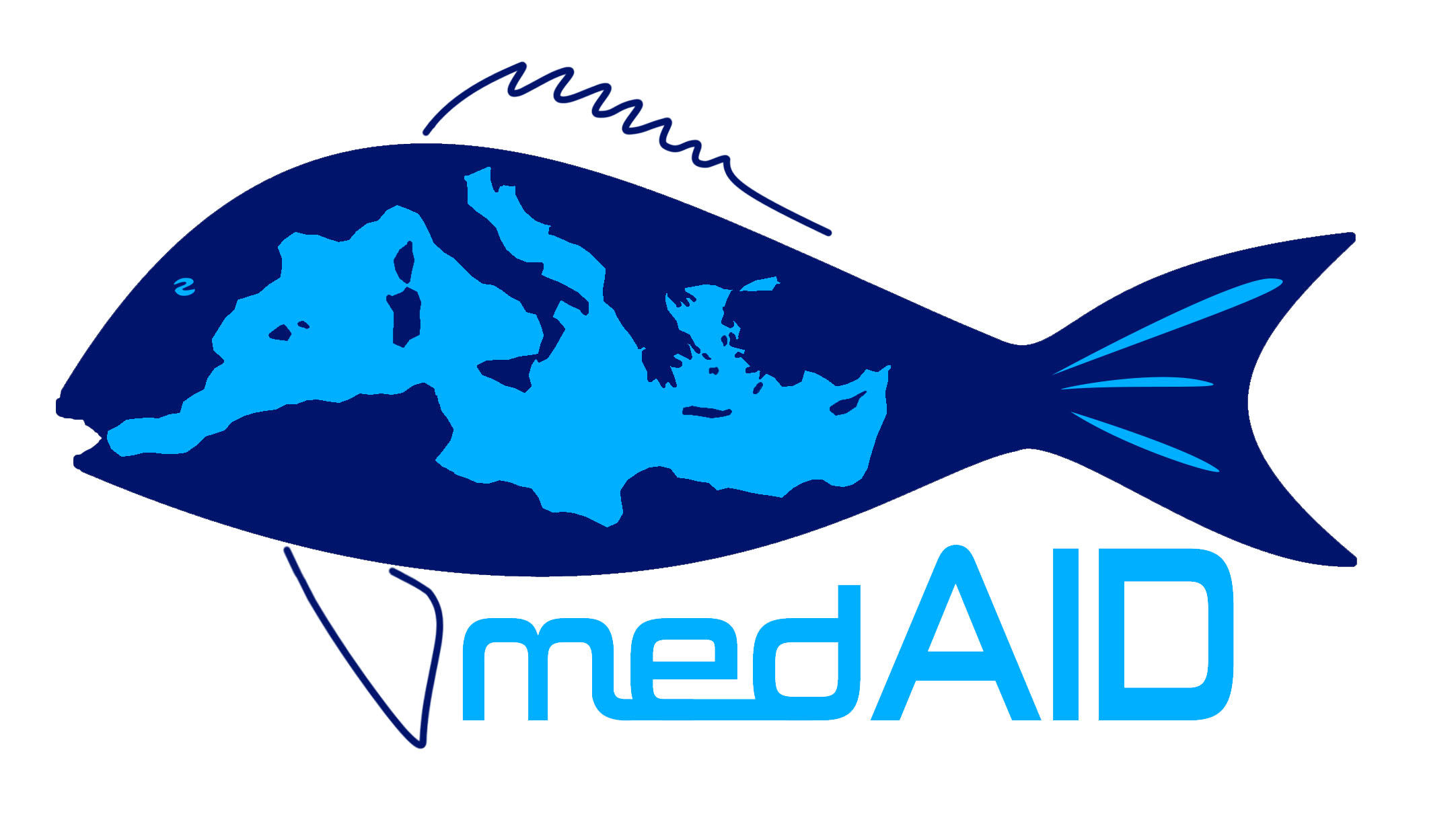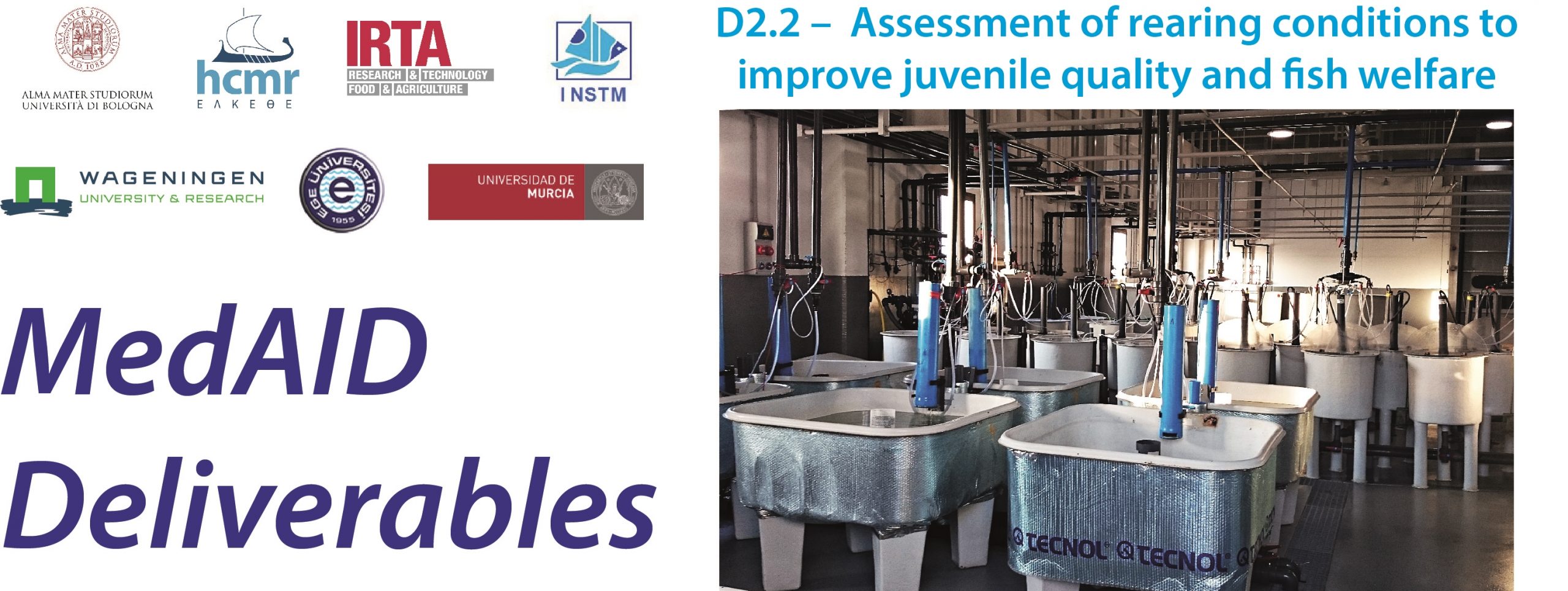MedAID Work Package 2 (Improving Zootechnical Performance) starts from the current context of knowledge in fish nutrition, and considers work on improvement in rearing conditions and feeding strategies that are fundamental to improve their related Key Performance Indicators (KPIs). This is a multidisciplinary WP that looks for correlations between different parameters related to rearing conditions, environmental factors feeding, growth, fish health and fish quality.
Task 2.2 (Assessment of the optimal rearing conditions to improve quality and fish health) addresses the problem of rearing conditions from a multidisciplinary approach in European seabass (Dicentrarchus labrax) and gilthead seabream (Sparus aurata). Considering the different factors involved, this task has focused on the Effects of temperature in seabass during larval development (Subtask 2.2.1); Effect of optimal water current inducing swimming behaviour (Subtask 2.2.2) and Effects of fish density and daily feeding frequency on KPIs (Subtask 2.2.3).
Subtask 2.2.1. – Effects of temperature in seabass during larval development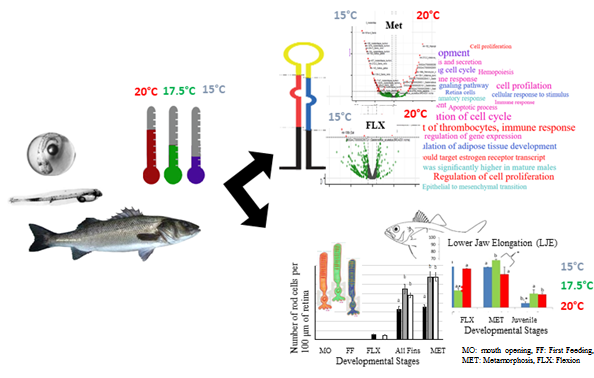
The three different rearing temperatures (15, 17.5 and 20°C) applied to the rearing tanks from the egg until the metamorphosis stage did not clearly “favour” any deformities in seabass. Deformities in juvenile fish were few, with lower jaw elongation being the most common in all three temperature groups, exhibiting lower occurrence in juveniles than in larvae. Vertebral column deformities (kyphosis, lordosis and vertebral fusions) were observed at low frequencies in all three populations examined. In general, skeletal deformities were not related to temperature, but possibly more to diet.
The cone photoreceptors in the eye were already distinguishable at the mouth opening stage of all three temperature treatments, whereas the rod cells first appeared at the flexion or the all fins developmental stage. The density of both cone and rod cells was influenced by the fish rearing temperature.
As for sexual differentiation, female percentage reached 46% in the 17.5°C group, whereas in the 15 and 20°C groups it was 35.92 and 27.33%, respectively.
Fish reared at 20°C exhibited better growth during larval rearing, however fish at 17.5°C compensated for growth and were at the same size as fish reared at 20 °C at two years of age.
Epigenetics studies reveal that microRNAs (miRNAs, a class of small non-coding RNA involved in gene expression regulation) display different, stage-specific patterns according to the different temperatures. Specific developmental stages such as flexion and metamorphosis revealed to be more sensitive to temperature changes. On the other hand earlier ontogenesis stages seem not to be influenced by temperature. miRNAs identified among the temperatures are mainly involved in the regulation of immune-related genes but also of genes related to sex determination. The generated dataset will contribute to additional investigations of small non-coding RNA (sncRNA) besides miRNAs, such as piwi, sn and sno, or even long non-coding lncRNA.
Subtask 2.2.2. – Effect of optimal water current inducing swimming behaviour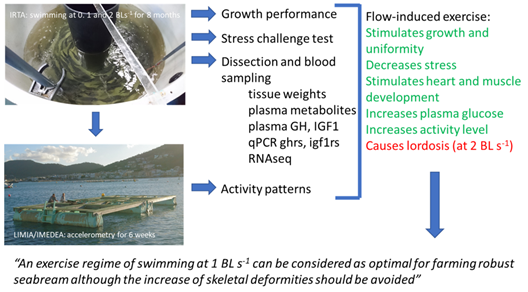
Flow conditioning at 1 body-length (BL) s-1 provided optimal conditions for growth (body weight increase) and uniformity (lower variation in body weight), stress (lowest baseline plasma cortisol), robustness (higher condition factor, larger hearts) and energy mobilization (increased plasma glucose) of gilthead seabream.
Activity patterning can be useful for timing feeding events at the start of the fish active periods. Fish in the sea cages were more active from 6 to 14 h and 18 to 0 h, and less active from 0 to 6 h and 14 to 18 h, indicating food-anticipatory activity. Seabream were not nocturnal and exhibited lower activity in the afternoon.
Exercised fish that were conditioned at 1 BL s-1 before transfer to the cage were more active than controls and fish conditioned at 2 BL s-1. An optimal exercise regime of swimming at 1 BL s-1 can therefore be considered for farm application although the increase of skeletal deformities should be avoided.
Subtask 2.2.3. – Effects of fish density and daily feeding frequency on KPIs
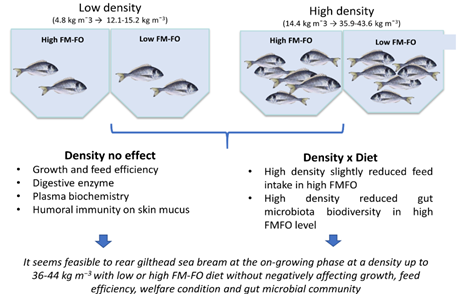
Results of rearing density during on-growing indicate that seabream can cope well with high rearing density up to 36-44 kg m−3 without compromising performance and fish health and that a high level of vegetable dietary ingredients did not amplify the potential stressful effects of rearing density. Similarly rearing density had no major effects on overall performance and feed efficiency of European seabass reared at high or low fishmeal and fish oil dietary level suggesting that 40-47 kg m−3 could be near the maximum tolerable stocking density.
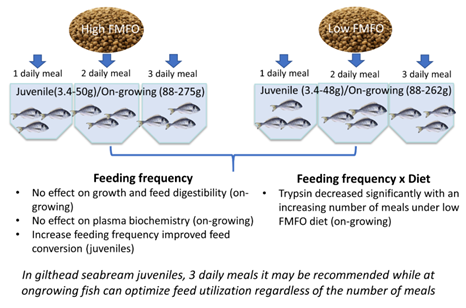
Results of feeding frequency indicated that gilthead seabream at juvenile stage showed improved feed utilization when feeding frequency was 3 times a day. During the on-growing phase different feeding frequencies had no major effects on overall performance and feed efficiency, indicating that at this stage gilthead seabream seems able to maximize feed utilization regardless of the number of meals using high or low FM-FO dietary level.
Access to the full deliverable
